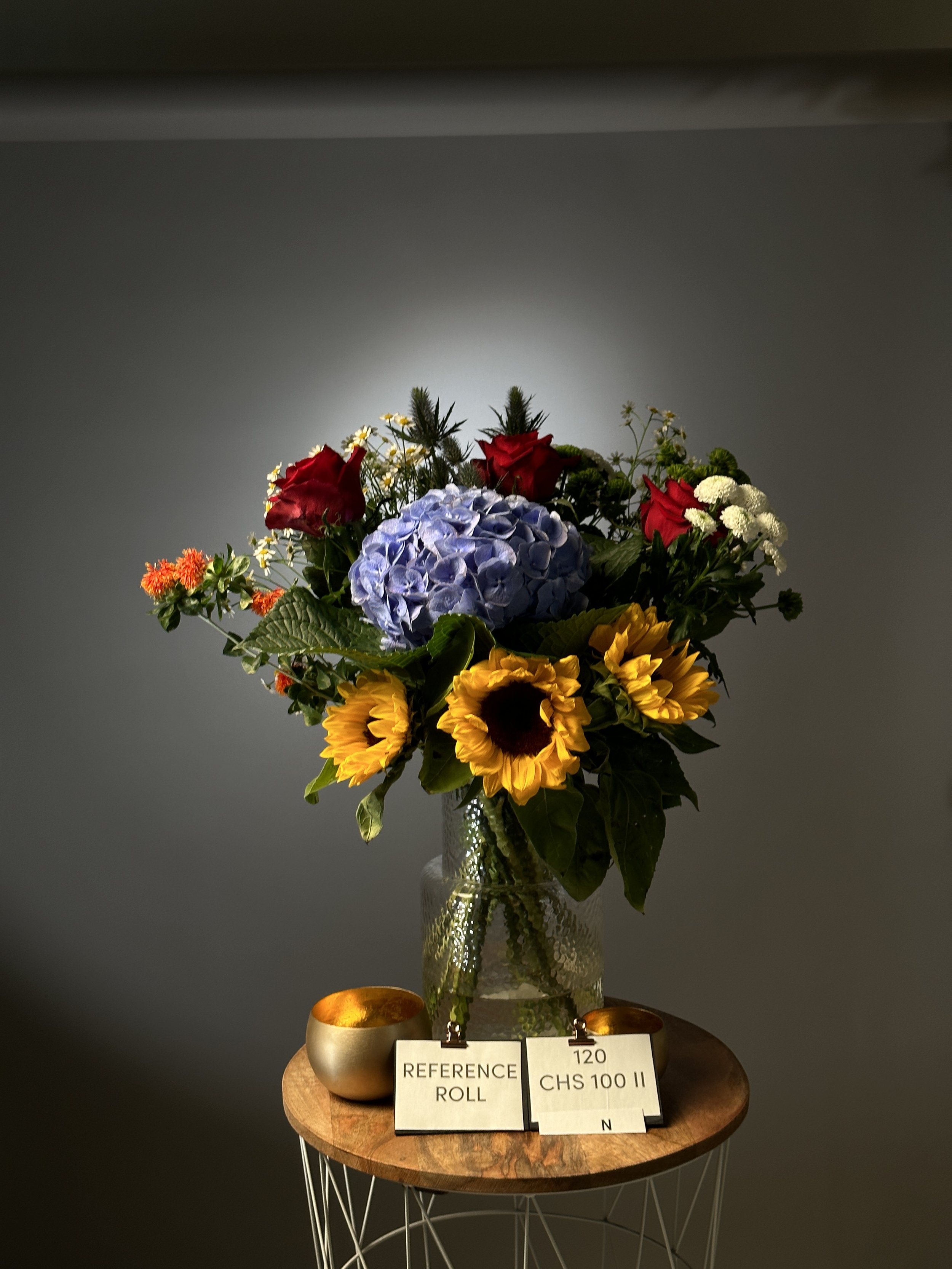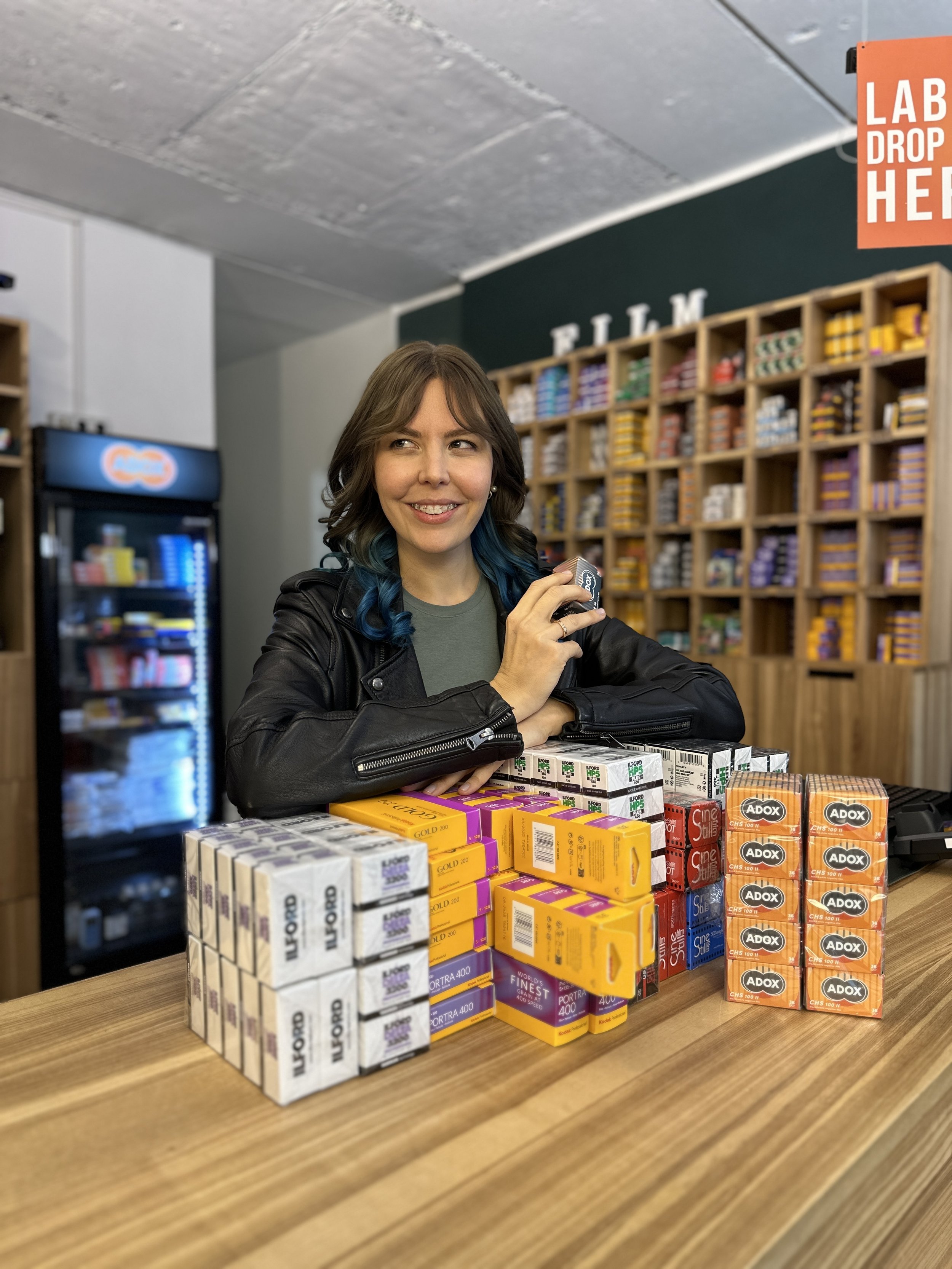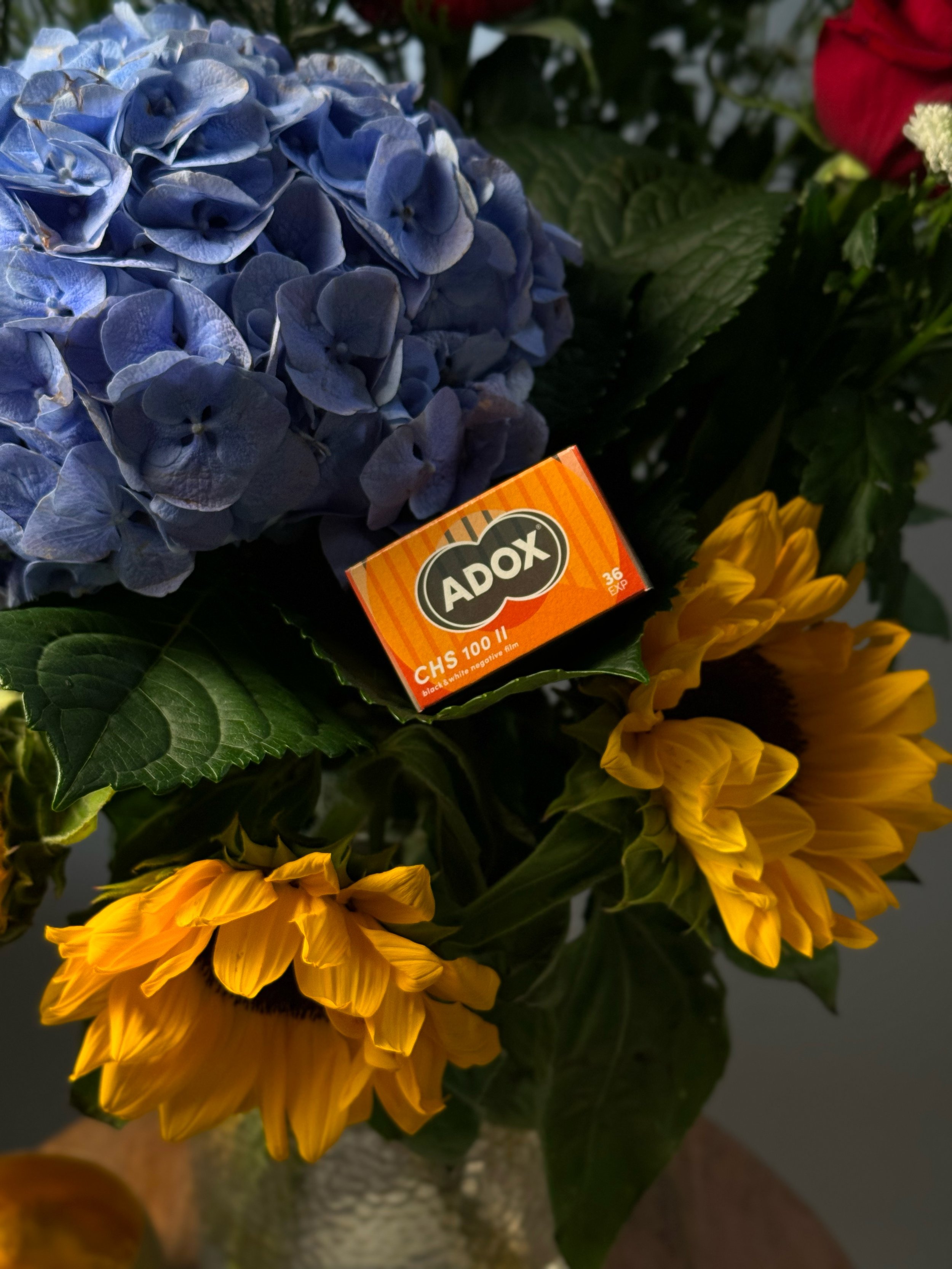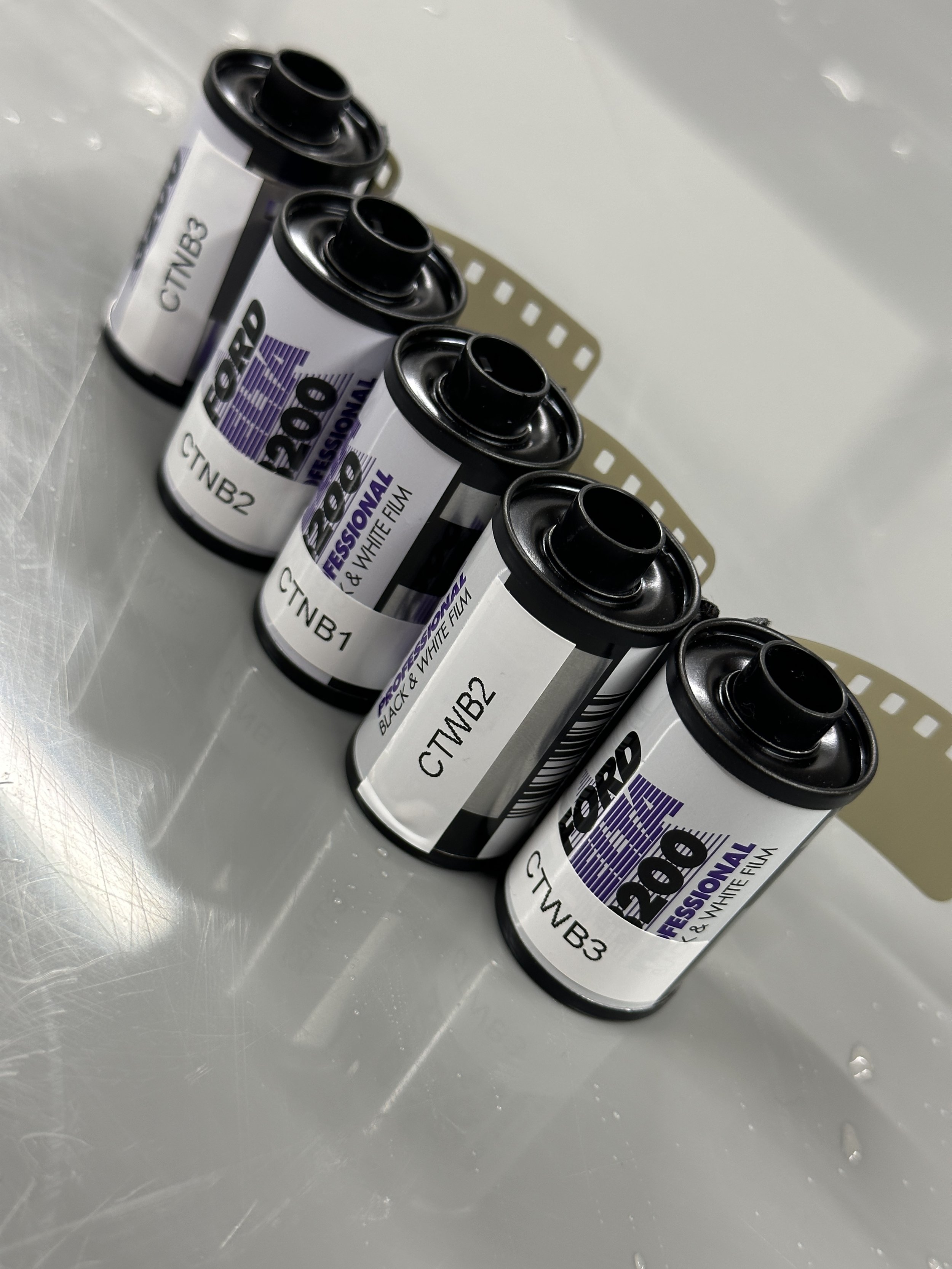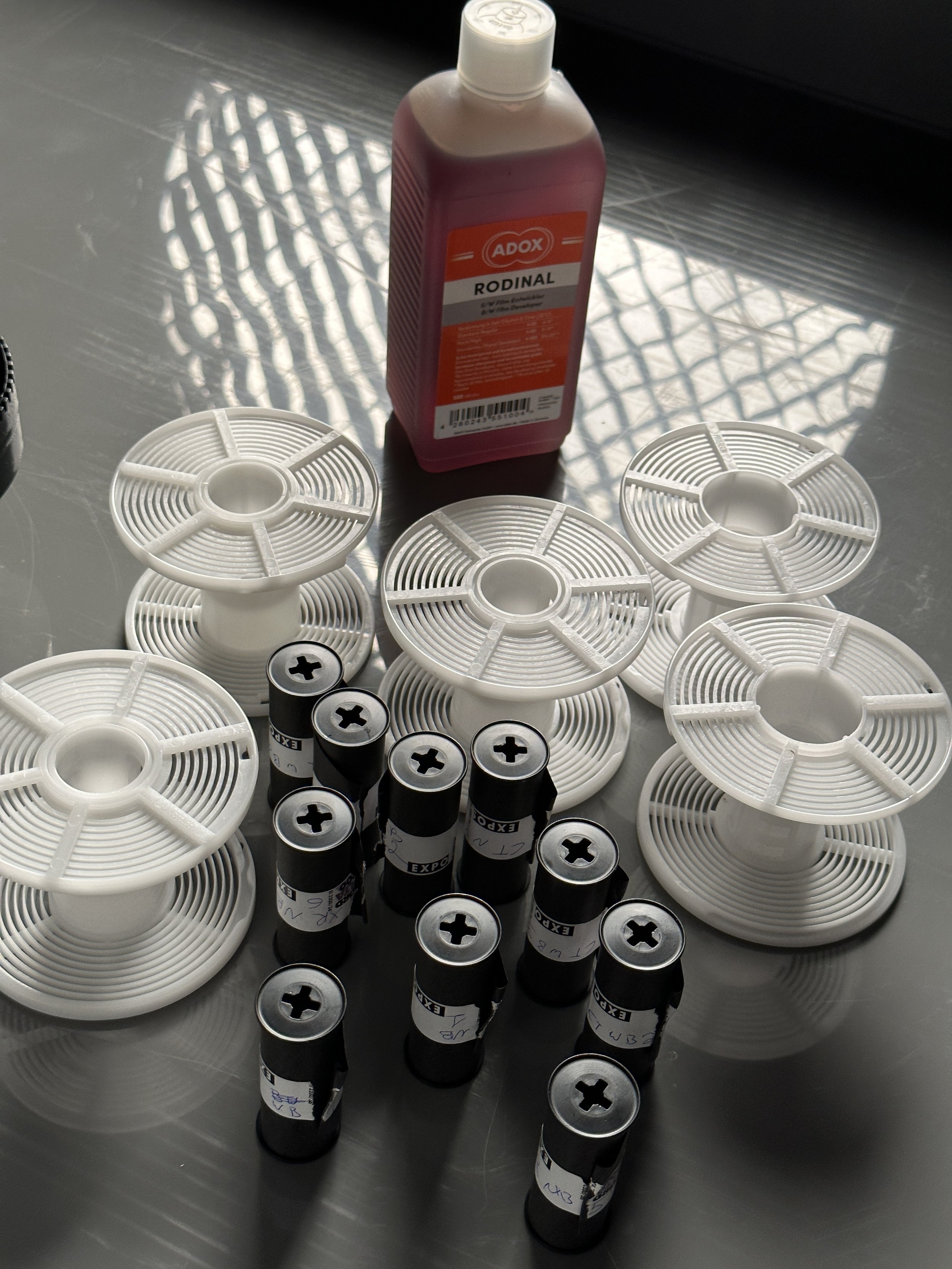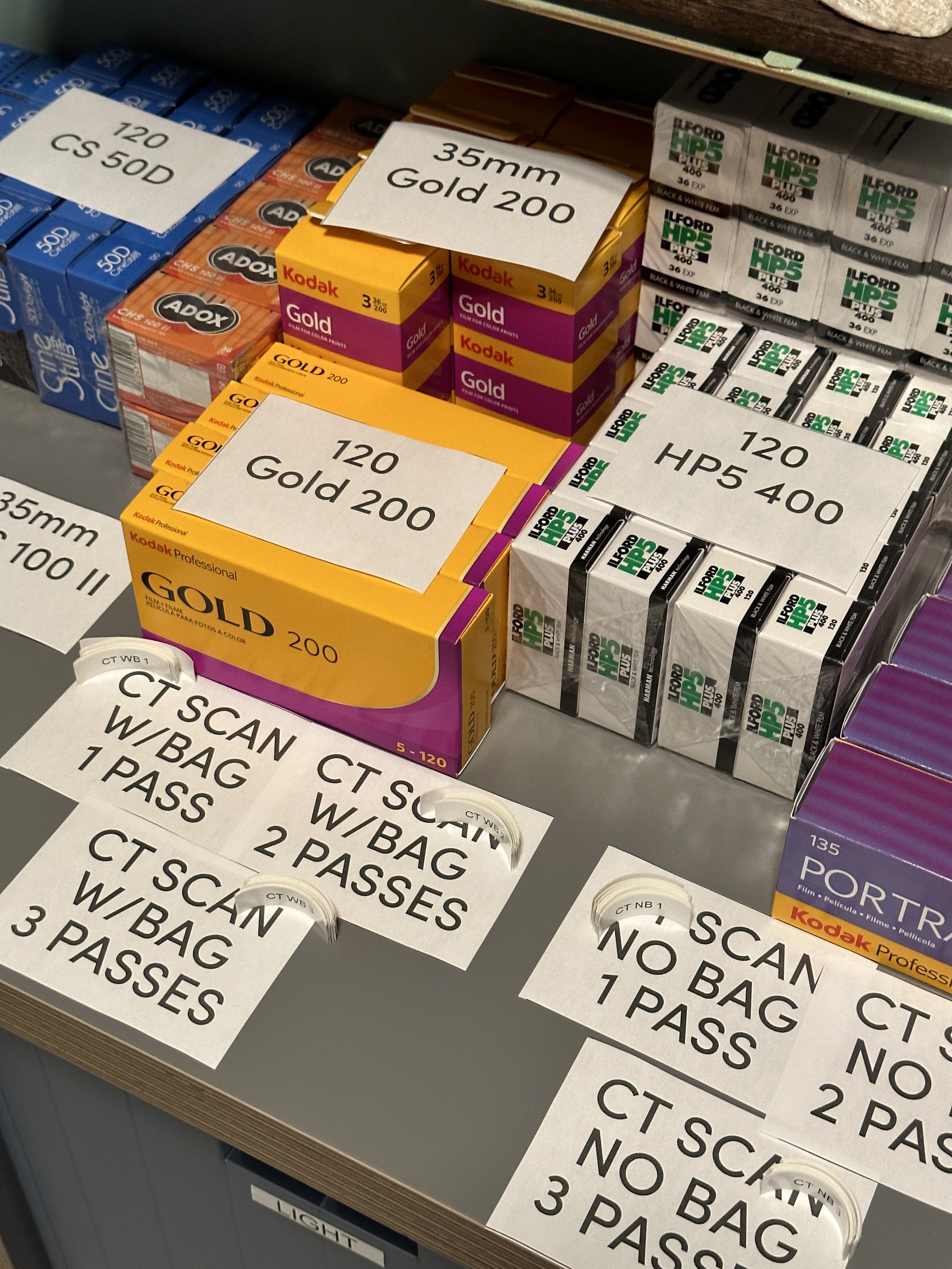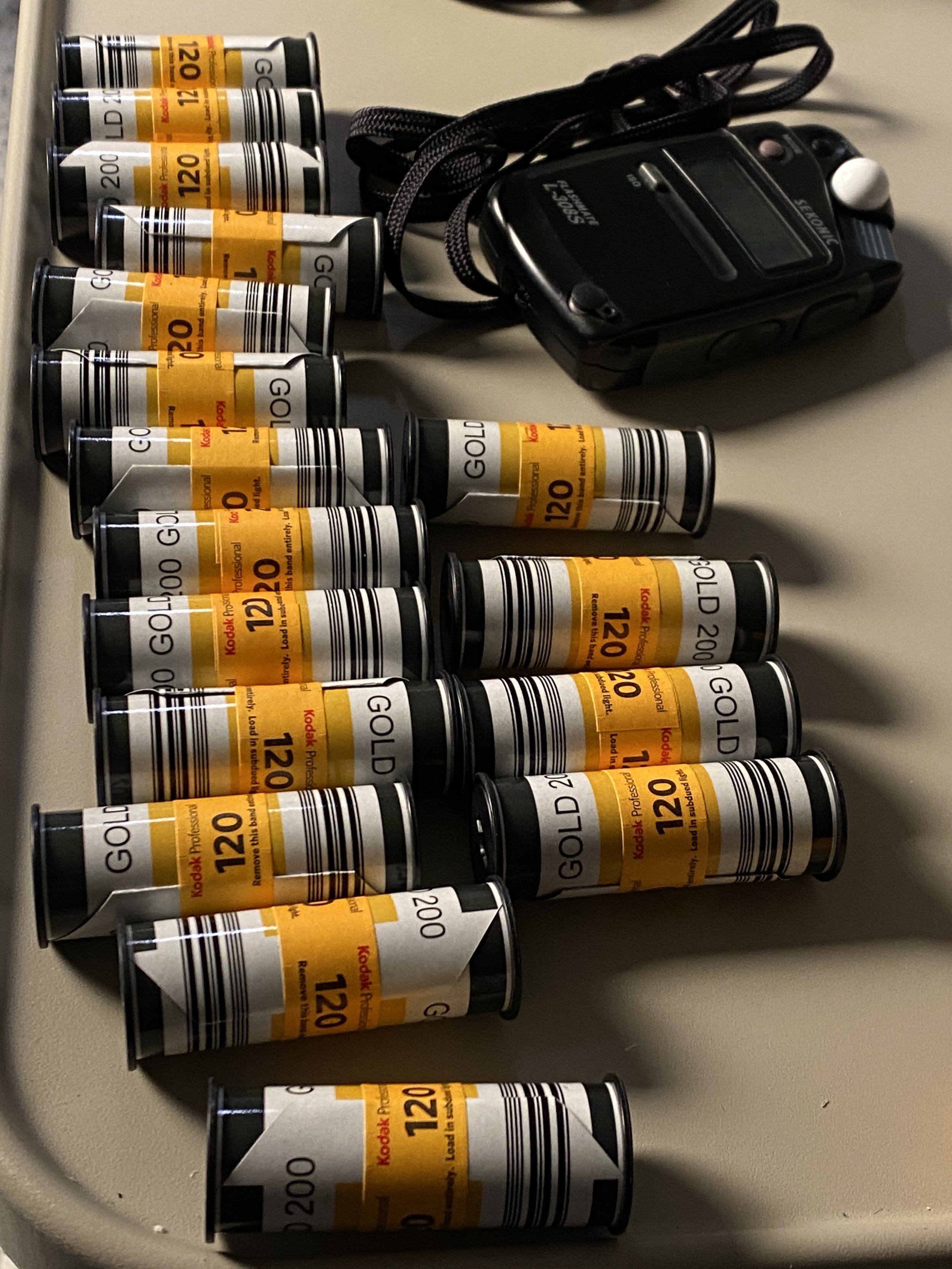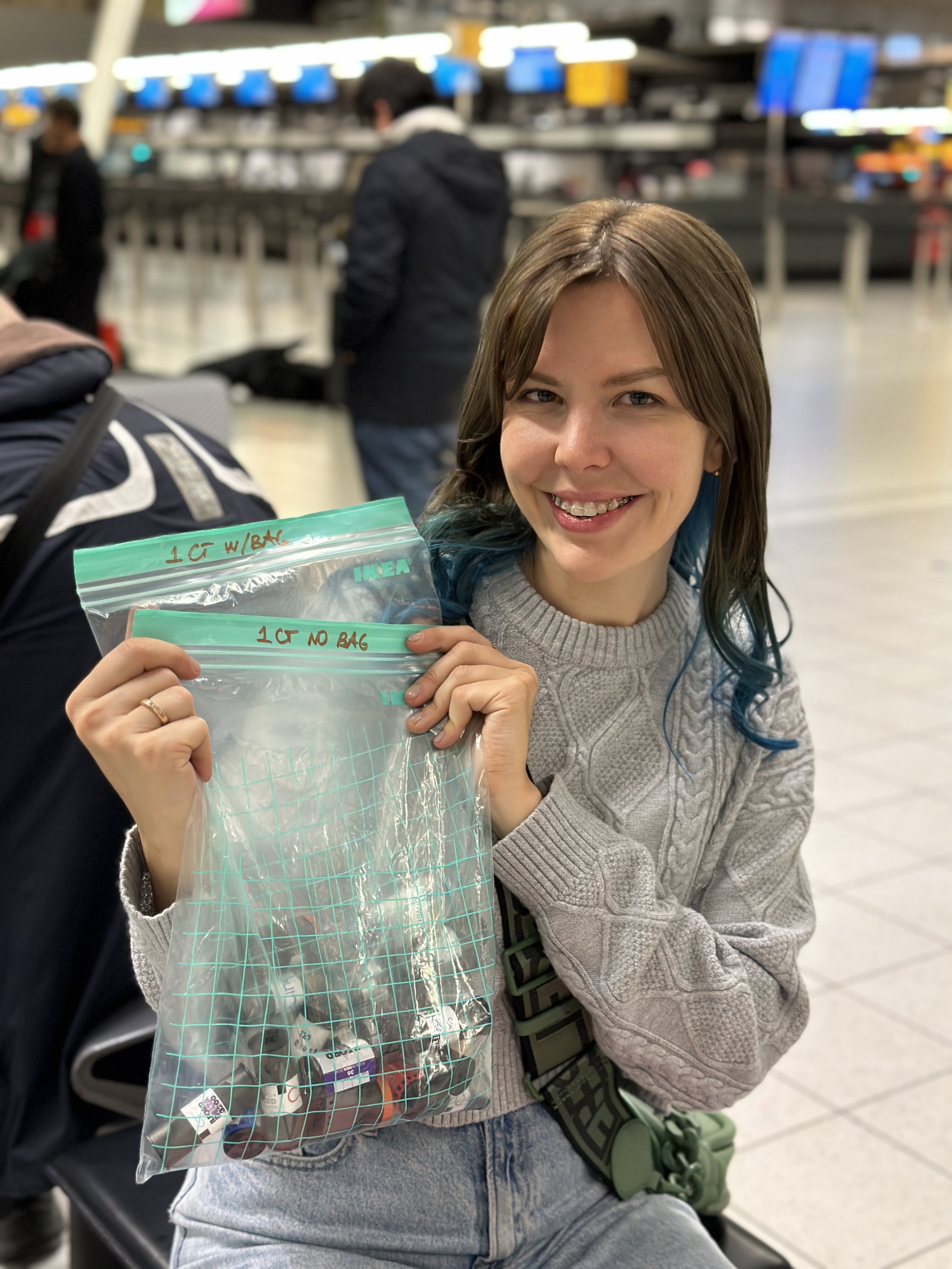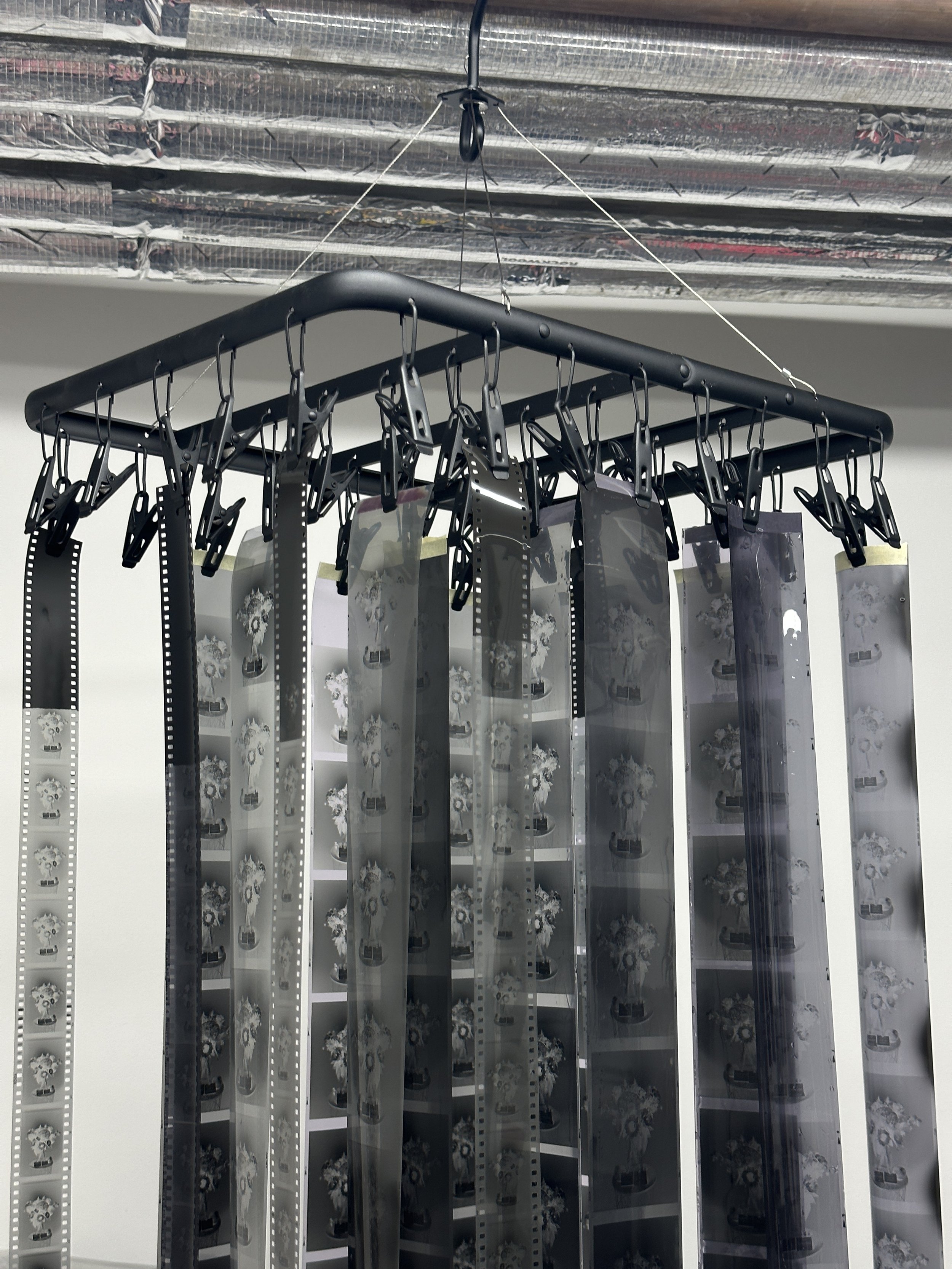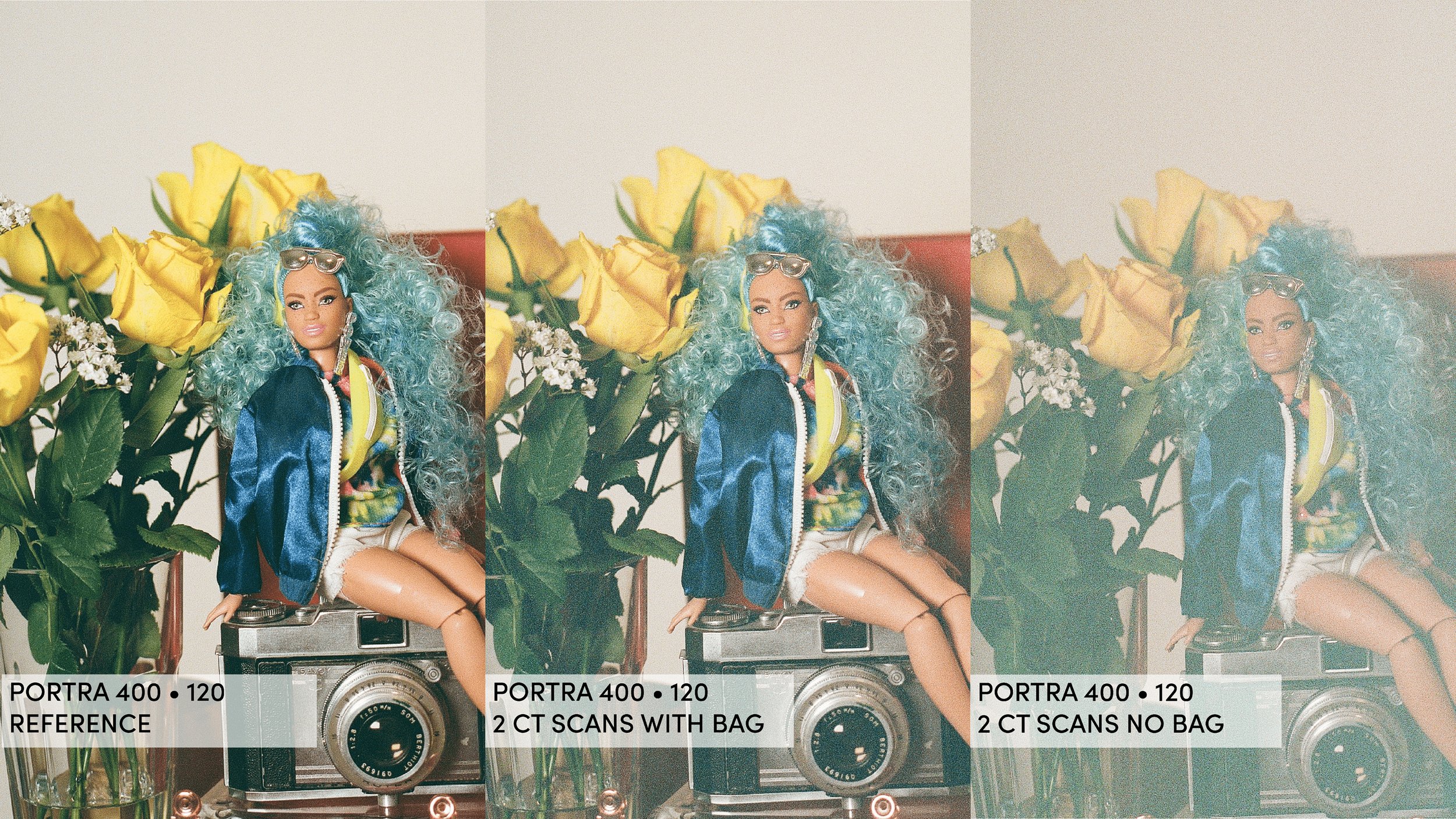Lina Bessonova
Analog Photography
FLYING WITH FILM: AIRPORT SCANNERS TEST
Do airport security scanners damage film? Is it true, that X-ray scanners are safe for films up to 1600ISO? The new CT (computer tomography) scanners - do they ruin film at any ISO? Is 35mm film safer to take through scanners than 120? Do X-ray protective bags work?
Should we insist on hand-checking, or stop being paranoid?
I had all those questions spinning in my head since a couple of years. The airport security will claim the X-ray scanners are safe up to 1600ISO - but some of my 400ISO films with clear X-ray waves and fog are not imaginary. All my conversations with the airport staff about hand-checking were stressful and intimidating - especially because I did not have hard proof.
Eventually, with the newer CT scanners popping up at airports all over the world, I also became their victim. In Geneva Cointrin airport, I had twenty rolls (!) of my documentary work (!) totally burned, destroyed beyond salvation - and on top, I was talked to in a very aggressive way. That was my first CT scanner experience, and I didn’t know much about that technology. Since then, I’ve been thinking of designing an experiment which would give all of us traveling analog photographers hard proof - and, hopefully, peace of mind - about the airport security. Spoiler: peace of mind didn’t exactly happen.
I am beyond grateful to FOTOIMPEX for the support of this very important project.
THE SETUP
A still life scene was created with all the main colors, and the flowers were lit up to have deep shadows - because that is where the damage is usually most visible. When exposing, under the flowers I had notes about the film type, amount of X-ray or CT scans, and exposure from -2 to +2 stops. Then I would write the info on the outside of the roll, and place it in the corresponding transparent plastic bag. For example, “1 CT Scan No Bag”, “6 X-ray Scans With Protective Bag” etc. I also, of course, shot reference rolls which stayed at home.
This was done to not confuse the films even if they would accidentally fall out of the plastic bag, and to be able to judge the results straight from the scans. Thus mistakes in comparisons were excluded.
Exposing the rolls took around 15 hours straight.
THE SECURITY SCANNER TESTS
The films were placed in a regular security tray, with and without a protective bag, however, some films did go on top of others. Since I had so many, this was, unfortunately, inevitable.
All the six X-ray scans were done at the Berlin Brandenburg airport, which is equipped with Smiths security scanners. I would go through the security, give a set of bags to the videographer, go through again, give him the next set etc. Once the 6 times were done, my husband took all the films and drove them straight to the lab to be processed in freshly replenished chemistry, and we headed to Amsterdam. I did not fly with that first batch film! So the “radiation in the airplane” is excluded.
The films for CT scanner tests were hand-checked in Berlin. The Amsterdam Schiphol airport is equipped with ==== CT scanners, and, knowing that they do more damage, I only went through 3 times. Again, the films were laid out in a tray, but some a bit on top of others.
Those films were processed the next day, all together with the reference rolls.
PROCESSING AND SCANNING
Color films were processed all one after another within two days, in fresh C-41 minilab chemistry, and scanned with exactly the same settings, without frame-to-frame auto correction.
B/W films were processed in ADOX Rodinal, all of one type together in one tank (a very big one:). When scanning, all of the rolls had identical settings.
TEST LIMITATIONS
•I tested both color and b/w films, but it became apparent that color film shows the damage much more than b/w.
• Some films did go on top of others in the security tray.
• The scanner power was uncontrollable. It might have been low, medium or strong - I have no way of knowing.
• I did not do step wedges (mainly, because they don’t fit on 120 film - and to fit them, you need a special machine). This might be something to try next, after I had my first results.
• The CT-scanned films did fly to Amsterdam and back, but the damage is so heavy that it would be rather ridiculous to blame it on the “flight radiation”.
WHAT DID WE LEARN?
Up to 400 ISO, on HP5+, we are seeing no terrible damage, after six passes through an X-ray without a protective bag. However, there is a 0,03 base fog increase. We can see how the shadows became slightly more open => contrast is slightly reduced.
I re-checked the results with a Portra 400 (as you can see by the flowers, a few days later). This time, I actually traveled with the film, and took it through security scanners in Berlin, Nice and Malta - so that was a real-life random test. I made sure to place the roll in the tray separately from any other things.
It equally shows no dramatic damage - but, upon close examination (and with the help of the eyedropper tool), I could see the red in the roses becoming like 10% more orange - a tendency that is more pronounced in the higher-ISO films. The base fog increased 0,03.
At 800ISO in 35mm, we are seeing a slight color shift and a bit more openness in the shadows at 6 X-rays, with the protective bag helping a bit. But the main helper is the fact that this film is in a 35mm canister.
With medium format, it all changes dramatically. Regular airport X-rays are clearly NOT safe until 1600ISO, and start seriously harming film at 800ISO. Protective bags do help.
Closer look at the damage.
Surprisingly, Delta 3200 does not look as bad as expected, and the base fog isn’t horrendous (relative to what I thought it would be) - but we have clear visible waves on 35mm film.
CT SCANNERS
In some airports, the staff says CT scanners are “safe up to 400-800-1600ISO” - depends on the city. Let me be just upfront about it, before you even look at the pictures: this is simply not true, for any ISO, even 50.
The CT scanner damage is stronger, but in a way more “tolerable”, because it appears in the shape of soft vignettes, which, unlike waves, don’t look harsh and can be somehow corrected in post-production. On Delta 3200 waves are also showing, on lower-ISO films it's just vignettes.
At a sensitivity as low as 50, the damage is minimal, barely visible, easy to be corrected with one mouse click. But is there none? No. Especially after 3 CT scans, we can clearly see the colors getting dirty green.
And 35mm is suffering too: look at the roses, how much more orange they become.
When underexposed, the damage is much clearer (this is what is happening in the shadows):
The ADOX CHS 100II, being a rather low-ISO black-and-white film, exhibited expected fog, but nothing that would not be easy to correct up to 2 CT scan passes. At the third one, the fog becomes disturbing in both 35mm and 120, even with a protective bag. My assumption is, we would see more damage if it was a color film. Obviously, at -1 stop the damage is more visible, but even at the normal exposure it’s rather clearly present.
KODAK Gold 200 in 35mm gained a bit of base fog and a tiny color shift, but remained perfectly usable.
As for Kodak Gold 200 in medium format though, the CT scanner, already at just 1 pass, starts creating a muddy-foggy veil on the image.
At 200ISO, the protective bag still does the job just great up to 2 passes.
At 400 ISO, with Ilford HP5+, the CT scanner effect starts being quite pronounced from the first pass, even in a protective bag. If up to 200ISO the effect could be kind of ignored or corrected, at a higher sensitivity the damage becomes too apparent. I have to say, this test is not so bad: my films that were “killed" in the Geneva CT scanner were Tmax400, and looked more like after 2 Amsterdam CT scans. Probably, the scanners were set to different intensities - a variable impossible to predict and control.
The 35mm HP5+ film performed better, and remained perfectly usable in a protective bag - but again, only once, and even after just one CT scanner pass you can see the shadows clearly opening, and the highlights going down.
I re-verified the effect of the CT scanners with Cinestill 400D (1 pass in Geneva), and got quite a color shift.
Another test was done in Amsterdam, with and without a protective bag, on Kodak Portra 400, with two passes. The effect is very strong and visible.
Where things really go downhill, in all formats, with and without the protective bag, is at 800ISO. This poor Cinestill 800T, a film with beautiful vivid colours and nice grain, got absolutely destroyed from the first pass.
35mm with a protective bag is still kinda tolerable, but the characteristics of the original film are getting lost.
Ilford Delta 3200, obviously, was plain gone.
ADDITIONAL TEST
I started wondering, whether there was a degree of shielding film which the CT scanner could not beat. I got a heavy medical X-ray protection apron with 3mm lead rubber inside. I cut it open, and tested:
• No protection
• Commercially available protective bag
• 1 layer lead rubber
• 2 layers lead rubber
• 1 layer lead rubber + 1mm stainless steel
• 2 layers lead rubber + 1mm stainless steel.
The tested film was Kodak Portra 400, and it went through the Amsterdam CT scanners twice - which is a standard, if you travel somewhere and come back home. Otherwise, it could be a 800ISO film gone through the CT scanner once.
Only with two layers of lead rubber (6mm!), the film stayed kind of sort of almost same. But there still is a change happening, especially visible in the red and shadow areas.
When underexposed, the damage is more obvious.
The SilverGrainClassics magazine sent an official press request for a commentary about film safety to the SMITHS scanner manufacturers, but since over two months we have not received a reply.
Feel free to share the entire post / parts of it on any social media, as long as there is a link to this website/my instagram (this applies to anything else you find on this website or on my instagram, whether it's related to the scanning topic or not)

